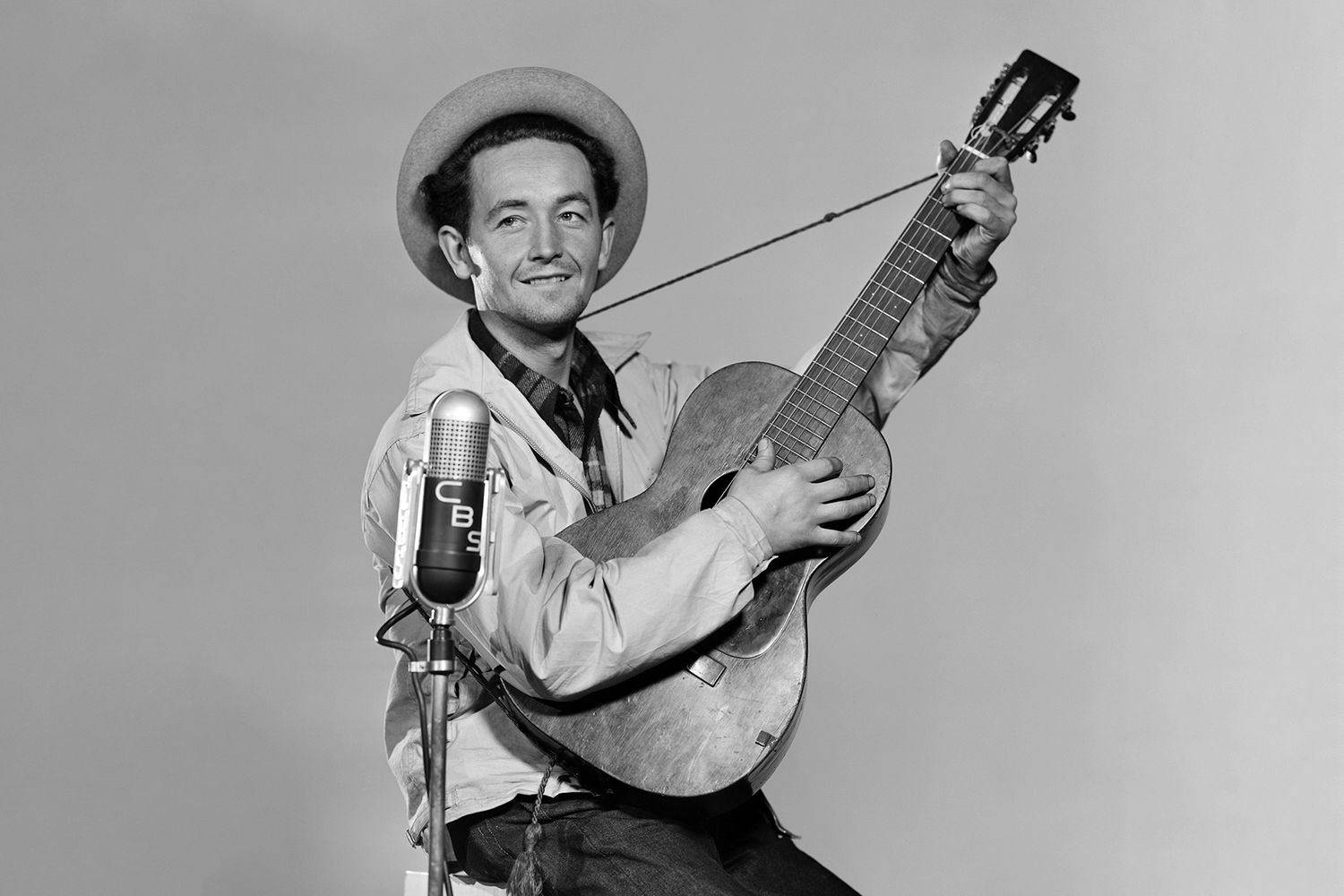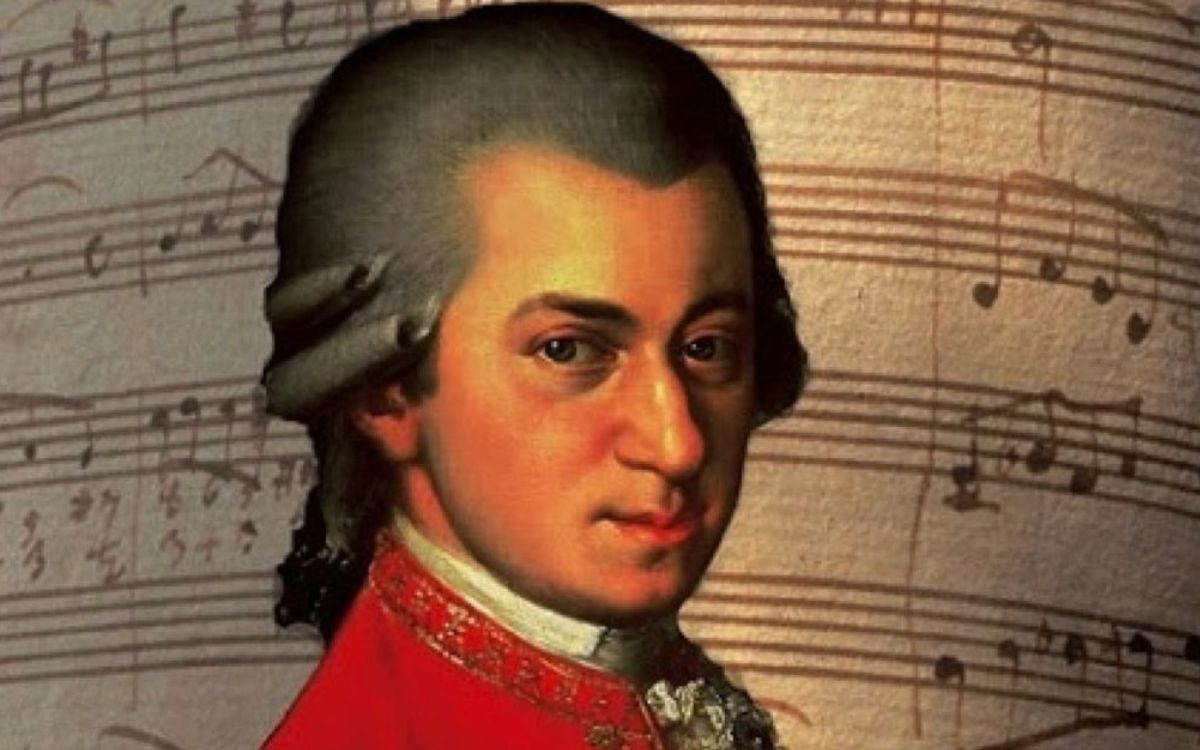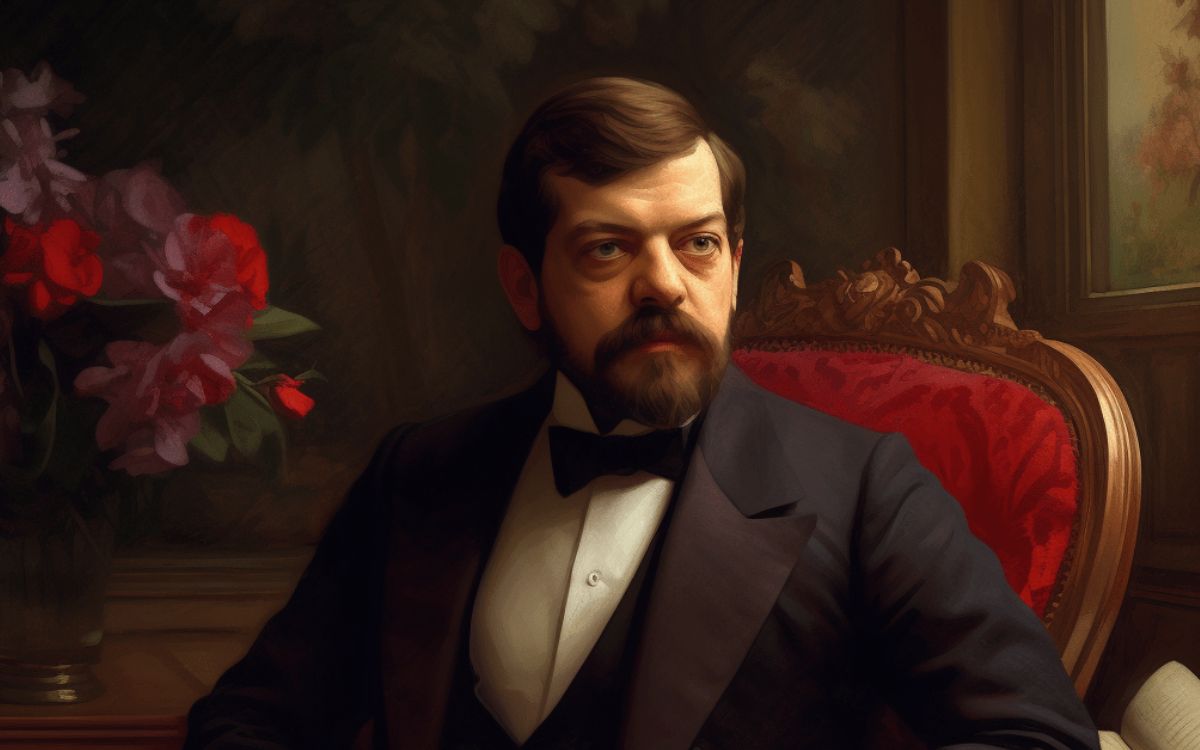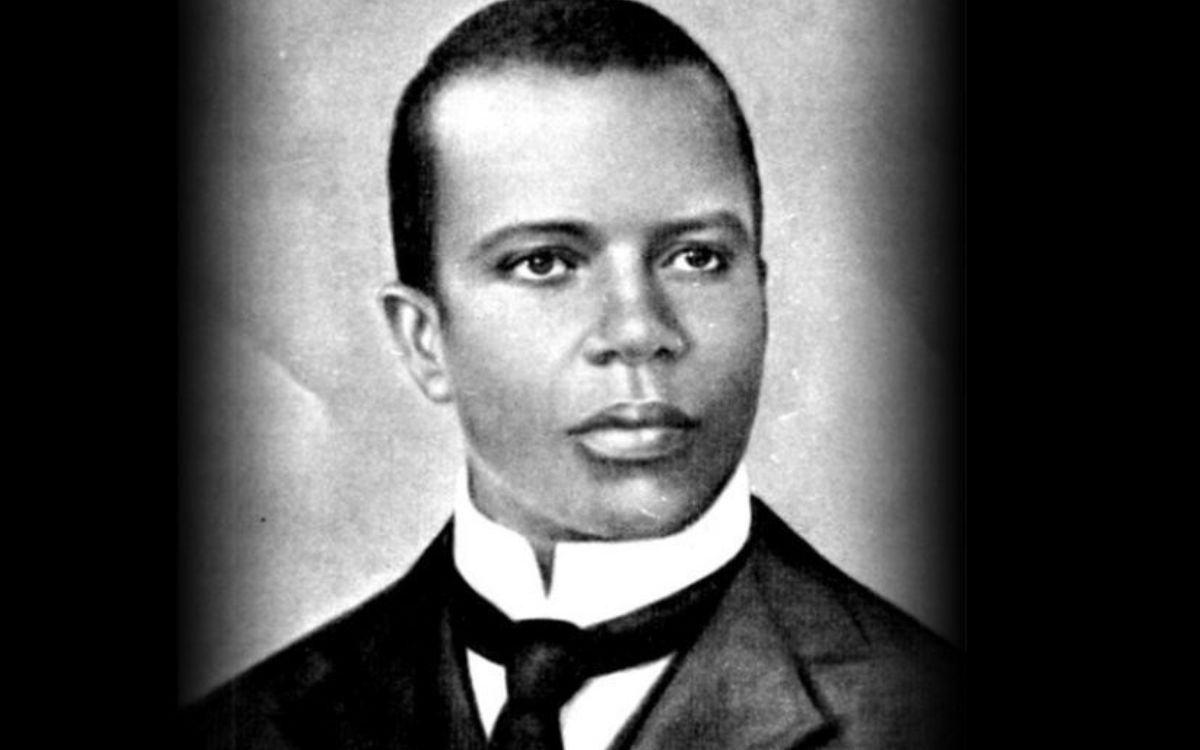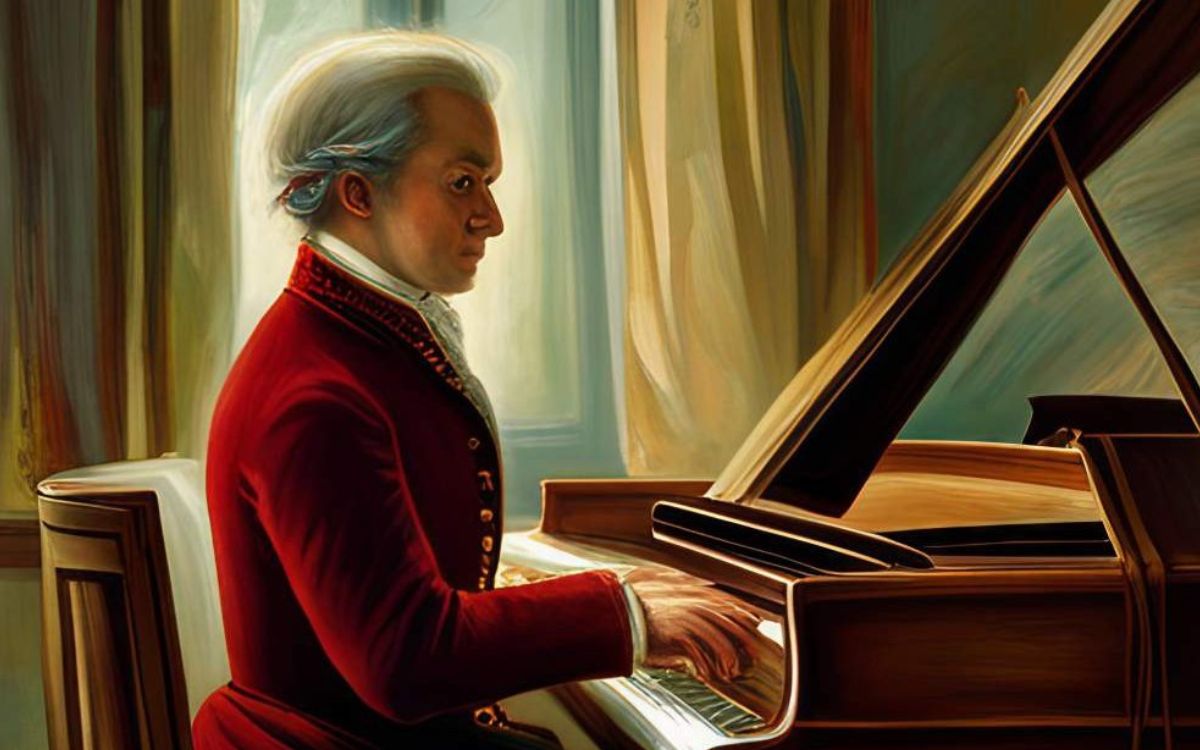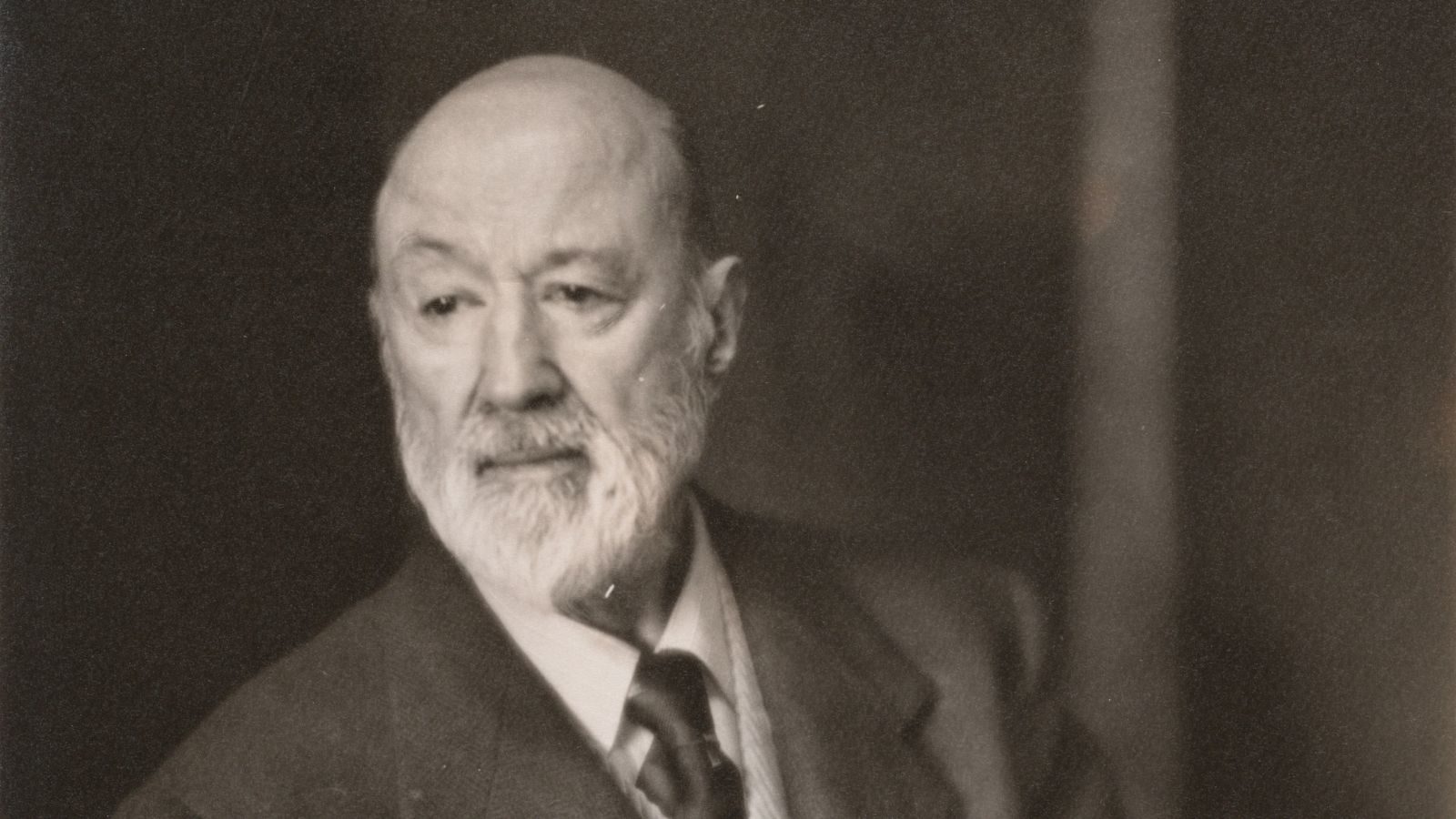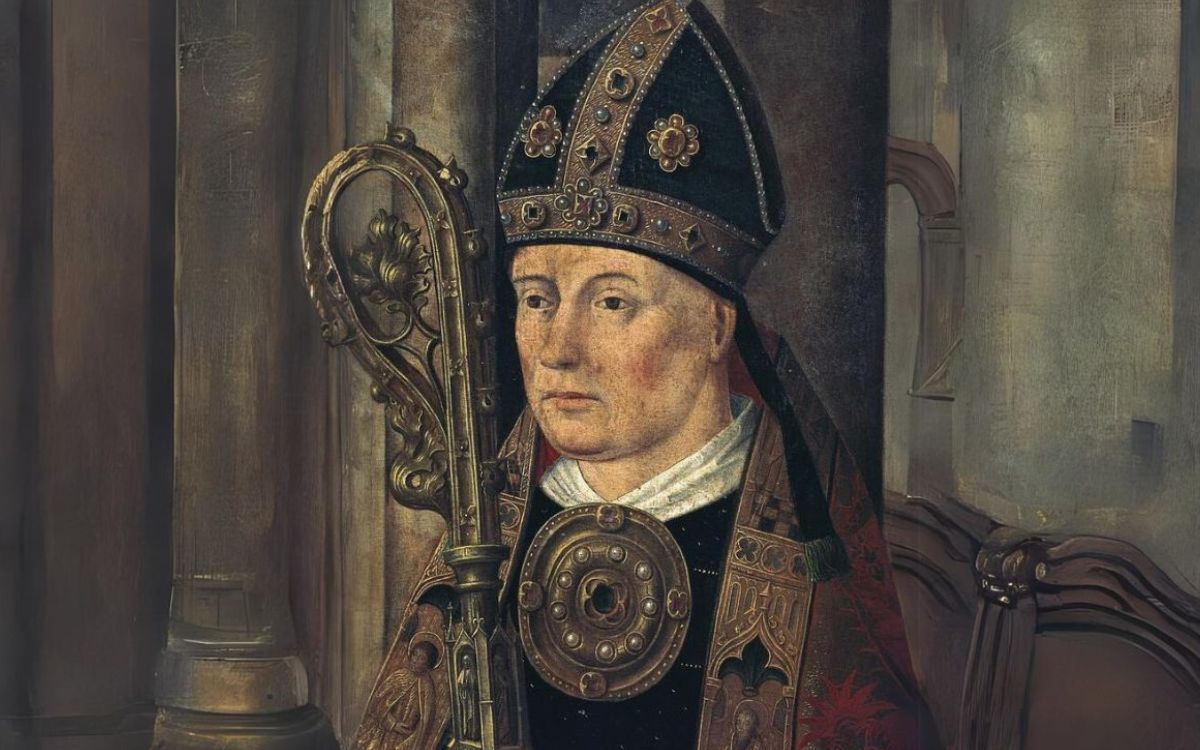Home>Production & Technology>Composer>Which Composer Wrote The Four Seasons?
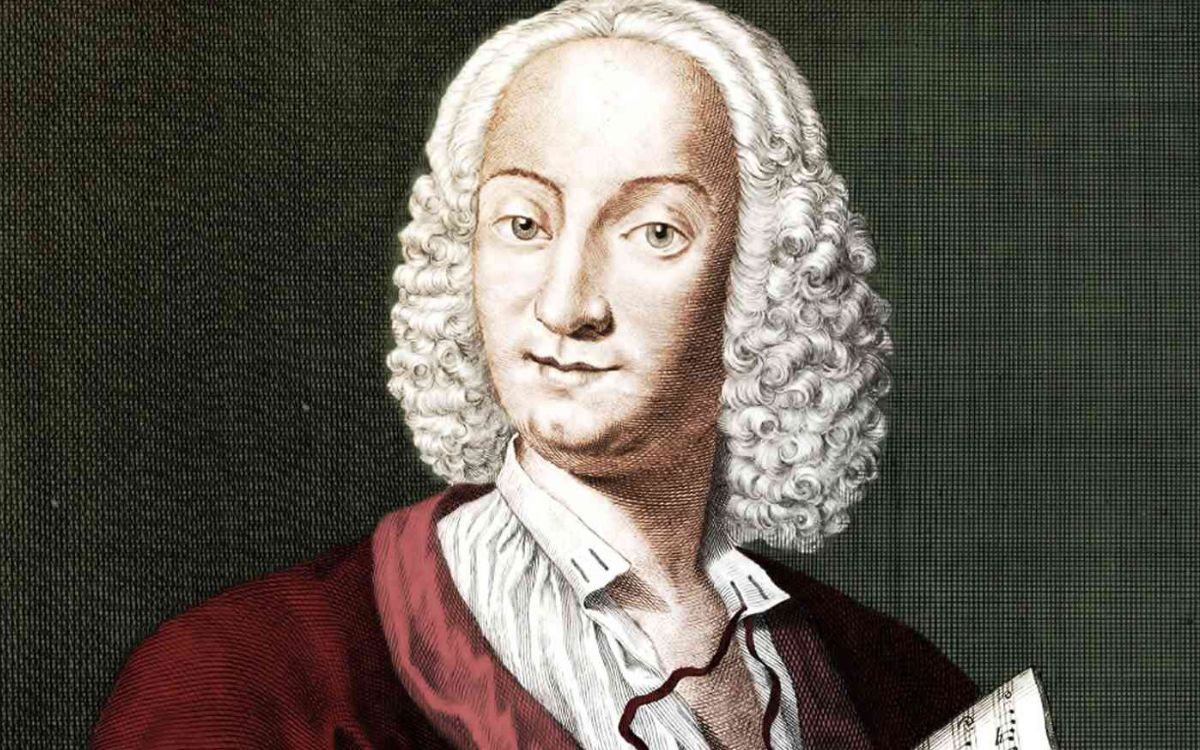

Composer
Which Composer Wrote The Four Seasons?
Modified: January 22, 2024
Discover the famous composer behind The Four Seasons and dive into the timeless melodies and beautiful harmonies they created. Experience the brilliance of this composer's masterpiece.
(Many of the links in this article redirect to a specific reviewed product. Your purchase of these products through affiliate links helps to generate commission for AudioLover.com, at no extra cost. Learn more)
Table of Contents
- Introduction
- Antonio Vivaldi: The Composer of The Four Seasons
- The Four Seasons: An Overview of the Composition
- The Spring Concerto: Character and Musical Features
- The Summer Concerto: Character and Musical Features
- The Autumn Concerto: Character and Musical Features
- The Winter Concerto: Character and Musical Features
- Influence and Legacy of “The Four Seasons”
- Other Noteworthy Compositions by Antonio Vivaldi
- Conclusion
Introduction
If you have ever found yourself captivated by the enchanting melodies and evocative harmonies of classical music, chances are you have come across “The Four Seasons.” This iconic composition has mesmerized audiences for centuries with its vibrant depiction of the changing seasons through music. But have you ever wondered who the mastermind behind this musical masterpiece is?
In this article, we will explore the life and work of Antonio Vivaldi, the brilliant composer who wrote “The Four Seasons.” We will delve into the intricacies of this composition and unravel its musical features that have enthralled listeners across generations.
Antonio Vivaldi was an Italian Baroque composer and violin virtuoso born in Venice in 1678. He was not only a prolific musician but also a priest, earning him the nickname “The Red Priest.” Vivaldi’s exceptional talent as a violinist and his innovative compositional style made him a renowned figure in the musical world during his time.
Vivaldi’s most famous work, “The Four Seasons,” is a collection of four violin concertos that vividly depict the seasons of spring, summer, autumn, and winter. Each concerto is accompanied by a sonnet, written by Vivaldi himself, which further enhances the imagery and narrative of the music.
Throughout this article, we will explore the unique characteristics of each concerto and the stories they tell. From the cheerful melodies of spring to the stormy passages of winter, Vivaldi’s musical genius shines through in this groundbreaking composition.
Join us as we embark on a journey through the seasons and uncover the remarkable craftsmanship of Antonio Vivaldi in “The Four Seasons.”
Antonio Vivaldi: The Composer of The Four Seasons
Antonio Vivaldi, often referred to as the “Father of Concerto,” was an immensely talented composer and violinist of the Baroque era. Born in Venice, Italy, in 1678, Vivaldi’s musical journey began at a young age as he followed in his father’s footsteps as a violinist. His talents flourished under the guidance of renowned musicians, honing his skills both as a performer and a composer.
Vivaldi’s music was known for its innovative style and emotional depth, captivating listeners with its vivid harmonies and expressive melodies. He was a master of the concerto form, with over five hundred concertos to his name. However, it is his most famous work, “The Four Seasons,” that has truly stood the test of time.
Composed in 1723, “The Four Seasons” consists of four violin concertos, each representing a different season. It is believed that Vivaldi based this composition on a set of sonnets, possibly written by himself, which added poetic imagery to the musical narratives. This combination of music and poetry was a groundbreaking approach at the time.
Vivaldi’s ability to create vivid musical imagery is evident in “The Four Seasons,” as he uses innovative techniques to depict the sounds and moods associated with each season. From the gentle breezes of spring to the relentless heat of summer, and from the rich hues of autumn to the icy winds of winter, Vivaldi’s music transports listeners to the heart of each season.
Despite his immense talent and success during his lifetime, Vivaldi’s popularity waned after his death in 1741. It was not until the late 20th century that his work experienced a revival, with “The Four Seasons” leading the way. Today, it is one of the most frequently performed and recorded works in the classical music repertoire.
Vivaldi’s impact on the world of music extends beyond “The Four Seasons.” His compositions span a wide range of genres, including operas, chamber music, and sacred music. His innovative use of harmony, melodic invention, and rhythmic precision paved the way for future composers.
While Vivaldi’s fame may be primarily attributed to “The Four Seasons,” his contribution to music as a whole is immeasurable. His compositions continue to inspire and delight audiences around the world, ensuring that his legacy as one of the greatest composers of all time remains intact.
The Four Seasons: An Overview of the Composition
“The Four Seasons” is a collection of four violin concertos, each representing a different season of the year: spring, summer, autumn, and winter. Composed by Antonio Vivaldi in 1723, it stands as one of the most celebrated and iconic works of the Baroque era.
The structure of “The Four Seasons” follows a traditional concerto format, consisting of three movements: fast-slow-fast. Each concerto is accompanied by a sonnet, believed to be written by Vivaldi himself, which sets the scene and adds a poetic dimension to the music.
The first concerto, “Spring,” opens with a joyful expression of new life and vibrant colors. The allegro movement features cheerful melodies and energetic rhythms that evoke the awakening of nature after the cold winter. The second movement, largo, transitions to a peaceful and contemplative atmosphere, painting a serene picture of a springtime landscape. The final movement, allegro, brings back the excitement and vitality with lively dance-like passages and intricate violin virtuosity.
The second concerto, “Summer,” contrasts the lively nature of spring with a more dramatic and intense portrayal of the season. The first movement, allegro non molto, captures the scorching heat and relentless energy of the sun, featuring fiery passages and rapid violin runs. The slow movement, adagio, provides a moment of relief with its lyrical and expressive melodies, depicting a gentle summer breeze. The final movement, tempo impetuoso d’estate, returns to the fiery intensity of summer, with blazing fast violin passages and thunderous musical imagery.
The third concerto, “Autumn,” brings a sense of nostalgia and abundance. The opening movement, allegro, paints a picturesque scene of the harvest, with lively and rhythmic melodies that reflect the joyous festivities. The second movement, adagio molto, introduces a melancholic and introspective atmosphere, as nature begins to transition into the colder months. The final movement, allegro, brings back the lively energy of the harvest, with vibrant melodies and rhythmic interplay between the solo violin and the orchestra.
The fourth and final concerto, “Winter,” is perhaps the most well-known of the collection. The first movement, allegro non molto, portrays the harshness and coldness of winter, with biting winds and icy landscapes. The slow movement, largo, presents a bleak and desolate atmosphere, with sparse harmonies and haunting melodies. The final movement, allegro, depicts the fury of a winter storm, with rapid string passages and frenzied musical motifs that capture the power and unpredictability of nature.
“The Four Seasons” is a testament to Vivaldi’s genius as a composer and his ability to convey vivid imagery through music. With its evocative melodies, skilled violin writing, and imaginative storytelling, this iconic composition continues to captivate listeners and showcase the timeless beauty of Vivaldi’s artistry.
The Spring Concerto: Character and Musical Features
The “Spring” concerto, the first of the four concertos in Vivaldi’s iconic composition “The Four Seasons,” captures the essence and beauty of the season with its vibrant and joyful musical characteristics.
The concerto opens with an energetic and spirited allegro movement, immediately evoking the imagery of spring awakening after the cold and dormant winter. The sunny and cheerful melodies intertwine with lively rhythms, creating a sense of renewal and new beginnings. The solo violin takes the lead, showcasing Vivaldi’s mastery of writing for the instrument, with virtuosic passages and intricate ornamentation that convey the joy and exuberance of the season.
The second movement, largo, provides a moment of tranquility and reflection amidst the exuberance of spring. The languid and lyrical melodies paint a serene portrait of a blossoming landscape. The solo violin weaves rich and expressive lines that evoke the delicate beauty of flowers and the peaceful ambiance of nature. The orchestra provides a gentle accompaniment, enhancing the sense of serenity and contemplation.
The final movement, allegro, returns to the lively and energetic character of the season. It is characterized by dance-like rhythms and playful melodies. The solo violin engages in a delightful interplay with the orchestra, showcasing Vivaldi’s skill in creating dialogue and interaction between soloist and ensemble. The music brims with a sense of excitement and celebration, mirroring the joy and abundance of springtime.
One of the remarkable aspects of “The Spring” concerto is Vivaldi’s ability to paint vivid musical imagery. Throughout the composition, listeners can almost visualize the vibrant colors, the blossoming flowers, and the energy of nature coming to life. Vivaldi’s use of lively rhythms, expressive melodies, and the virtuosic writing for the solo violin serves as a musical representation of the sights, sounds, and emotions associated with the season.
Overall, “The Spring” concerto is a testament to Vivaldi’s remarkable talent as a composer. Through its joyful and evocative musical features, it celebrates the arrival of spring and delights listeners with its masterful craftsmanship. Its enduring popularity and continued resonance with audiences are a testament to the timeless appeal of Vivaldi’s artistry and his ability to capture the essence of the seasons in music.
The Summer Concerto: Character and Musical Features
The second concerto in Antonio Vivaldi’s “The Four Seasons” is the “Summer” concerto, which vividly captures the intense heat, energy, and drama of the season. Through its powerful musical features, it presents a compelling portrait of summer.
The “Summer” concerto begins with an allegro non molto movement, marked by fast-paced and fiery passages that reflect the scorching heat of the sun. The music is filled with relentless energy, reflecting the intensity and power of the summer season. The solo violin takes the spotlight, exploring virtuosic and technically demanding passages, mimicking the heatwaves and reflecting the passion and intensity associated with the season.
The second movement, adagio, offers a contrasting respite from the fervor of the first movement. It presents a moment of relief and tranquility, portraying a gentle summer breeze. The melodies are lyrical and expressive, providing a sense of calm and serenity amidst the heat. The solo violin takes on a more tender and melodic role in this section, weaving delicate and emotive lines that evoke a sense of tranquility and reflection.
The final movement, tempo impetuoso d’estate, returns to the spirited and dramatic nature of summer. The music becomes more turbulent and dramatic, representing the relentless energy and fierce storms that can occur during this season. The strings cascade in rapid descending passages, reflecting the rain pouring down in a summer tempest. Interspersed with moments of calm and respite, the movement is a musical journey through the dynamic and ever-changing nature of summer.
The “Summer” concerto’s character and musical features effectively capture the essence of the season. From the intense heat and passion to the calm moments and dramatic storms, Vivaldi’s composing genius brings the listener closer to the experience of summer. The evocative melodies, virtuosic violin writing, and contrasting dynamics paint a vivid picture of the sights, sounds, and emotions that define the season.
Vivaldi’s masterful craftsmanship enables the listener to feel the scorching sun, the refreshing breeze, and the dramatic thunderstorms of summer. The juxtaposition of the different movements creates a multi-dimensional musical experience that encapsulates the various aspects of the season.
Overall, the “Summer” concerto is a testament to Vivaldi’s ability as a composer to capture the essence of a season through music. It showcases his mastery of storytelling and the evocative power of music, allowing listeners to immerse themselves in the intensity and beauty of the summer season.
The Autumn Concerto: Character and Musical Features
The third concerto in Antonio Vivaldi’s masterpiece “The Four Seasons” is the “Autumn” concerto. It beautifully captures the richness, nostalgia, and abundance associated with the season through its distinctive character and musical features.
The “Autumn” concerto opens with a lively allegro movement that reflects the joyful and festive atmosphere of the harvest season. The music is characterized by playful and rhythmic melodies that evoke images of abundance and celebration. The solo violin takes center stage, showcasing Vivaldi’s skill in creating virtuosic passages that highlight the joyful spirit of autumn. The orchestra provides a spirited accompaniment, adding to the sense of merriment and vibrancy.
The second movement, adagio molto, offers a contrasting mood to the lively first movement. It introduces a melancholic and introspective atmosphere, reflecting the inevitable transition from the warm days of summer to the cooler days of autumn. The melodies are hauntingly beautiful, expressing a sense of longing and reflection. The solo violin weaves gentle and expressive lines, evoking a bittersweet nostalgia for the fading warmth of summer.
The final movement, allegro, brings back the exuberance and energy of the harvest season. It features lively and rhythmic melodies, with the solo violin engaging in joyful interplay with the orchestra. This movement captures the vibrancy and excitement of autumn, with its colorful foliage and bustling activity. The music builds to a grand finale, expressing the intoxicating spirit of the season.
One of the remarkable aspects of the “Autumn” concerto is Vivaldi’s ability to depict the changing colors and flavors of the season through music. The contrasting moods of celebration and introspection beautifully capture the duality of autumn – a time of both joy and reflection. The rich harmonies, lively rhythms, and expressive violin writing all contribute to creating a vivid sonic representation of the season.
Vivaldi’s intricate attention to detail, his masterful use of thematic development, and his ability to evoke emotions through music make the “Autumn” concerto a captivating listening experience. It flawlessly translates the essence of autumn into a musical narrative, allowing the listener to be transported to a world of harvest festivals and nostalgic reflections.
Overall, the “Autumn” concerto stands as a testament to Vivaldi’s genius as a composer. Through its evocative music, it encapsulates the character and emotions associated with the season, leaving a lasting impression on the listener.
The Winter Concerto: Character and Musical Features
The final concerto in Antonio Vivaldi’s “The Four Seasons” is the “Winter” concerto. It is a captivating composition that effectively captures the chilling winds, icy landscapes, and turbulent storms of the winter season through its distinctive character and musical features.
The “Winter” concerto opens with an allegro non molto movement, immediately conveying the harshness and coldness of the season. The music is characterized by rapid and repetitive passages, representing the fierce and biting winds of winter. The solo violin takes on a more virtuosic role, navigating the challenging runs and fast-paced melodies that emulate the intensity of the season. The orchestra provides a dynamic and powerful backdrop, creating a sense of urgency and unease.
The second movement, largo, offers a stark contrast to the preceding movement. It slows down the tempo and introduces a haunting and desolate atmosphere. The music becomes more sparse, allowing for haunting melodies to emerge. The solo violin takes on a more emotive role, evoking a sense of solitude and introspection. This section conveys the quieter and more somber aspects of winter, capturing the tranquility that can be found amidst the snowy landscapes.
The final movement, allegro, returns to the furious and tempestuous nature of the season. It is a whirlwind of energetic and frenetic passages, representing the storms and blizzards that often accompany winter. The solo violin engages in breathtaking virtuosity, bringing to life the intensity and unpredictability of the weather. The orchestral accompaniment adds to the dramatic effect, creating a sense of urgency and turmoil.
What sets the “Winter” concerto apart is the way Vivaldi showcases the contrasting aspects of the season. From the biting cold and winds to the serene beauty of a snow-covered landscape, he pulls the listener through a wide range of emotions. The combination of fast and slow movements, intricate violin techniques, and dynamic orchestral interplay all contribute to the vivid portrayal of winter.
With its powerful musical features, the “Winter” concerto takes the listener on a dramatic journey through the coldest season. It vividly captures the raw and unforgiving nature of winter, reminding us of its beauty and challenges.
Vivaldi’s ability to create such evocative music solidifies his place as a masterful composer. The “Winter” concerto continues to resonate with audiences, providing a captivating exploration of the unique character and musical features of winter. It stands as a testament to Vivaldi’s ability to bring the essence of each season to life through his compositions.
Influence and Legacy of “The Four Seasons”
“The Four Seasons” by Antonio Vivaldi has left an indelible mark on the world of classical music, and its influence and legacy continue to resonate with audiences and musicians to this day.
From the time of its composition in the early 18th century to the present day, “The Four Seasons” has been widely performed and recorded, making it one of the most famous and frequently heard pieces in the classical repertoire. Its popularity can be attributed to the timeless themes it explores and the sheer brilliance of Vivaldi’s compositional technique.
The success of “The Four Seasons” lies not only in its musical virtuosity but also in its unique storytelling approach. By combining music and poetry, Vivaldi created a captivating narrative that transports listeners to the sights, sounds, and emotions of each season. This innovative approach sparked a new wave of programmatic music, where composers sought to tell a story or depict a scene through their compositions.
The legacy of “The Four Seasons” can be seen in the influence it had on subsequent composers. Its structure and evocative qualities influenced composers such as Johann Sebastian Bach and Wolfgang Amadeus Mozart. The concept of using music to depict a specific narrative or scene became a prevalent technique in classical music, leading to the development of other iconic compositions inspired by literature, nature, and everyday life.
Furthermore, “The Four Seasons” paved the way for the emergence of the solo concerto as a popular musical form. Vivaldi’s innovative use of virtuosic violin writing and the prominence given to the soloist within the composition are elements that have since become defining characteristics of the concerto genre. This influential approach can be seen in the works of composers such as Ludwig van Beethoven, Johann Sebastian Bach, and Niccolò Paganini.
Moreover, “The Four Seasons” has transcended the boundaries of classical music and has been embraced in popular culture. Its memorable melodies and recognizable themes have been featured in films, commercials, and even sampled in various musical genres. This widespread exposure has introduced Vivaldi’s music to new audiences and helped to solidify its lasting impact on the musical world.
Whether it is the breathtaking beauty of “Spring,” the fiery intensity of “Summer,” the melancholic nostalgia of “Autumn,” or the harsh drama of “Winter,” “The Four Seasons” continues to captivate listeners with its timeless appeal. Its influence can be felt in the countless performances and recordings, and its legacy is firmly established within the canon of classical music.
As a testament to Vivaldi’s genius as a composer, “The Four Seasons” serves as a reminder of the power of music to evoke emotions, tell stories, and transcend the boundaries of time. It will continue to inspire, influence, and enchant audiences for generations to come.
Other Noteworthy Compositions by Antonio Vivaldi
While Antonio Vivaldi is best known for his iconic composition “The Four Seasons,” his musical output extends far beyond this celebrated work. Vivaldi composed a vast array of other musical compositions across a wide range of genres, showcasing his versatility and mastery as a composer.
One of Vivaldi’s notable contributions lies in his composition of concertos. In addition to “The Four Seasons,” he composed a staggering number of over five hundred concertos, showcasing his exceptional skill in writing for specific instruments. These concertos span a variety of instruments, including the violin, flute, cello, and oboe, among others. Vivaldi’s concertos are characterized by their virtuosic solo passages, intricate harmonies, and dynamic interplay between the soloist and the orchestra.
Vivaldi’s vocal music compositions are also highly regarded. His operas, such as “Orlando furioso,” “Farnace,” and “Griselda,” showcase his ability to craft compelling narratives through music. Vivaldi’s operas are marked by expressive vocal melodies, dramatic storytelling, and rich orchestrations that bring the characters to life. His sacred vocal works, including his Gloria and Stabat Mater, are equally remarkable, displaying his ability to evoke deep emotions through choral and solo vocal writing.
In addition to concertos and vocal music, Vivaldi composed a significant amount of chamber music. His chamber works, particularly his sonatas, exemplify his command of form and structure. Whether it be for violin, flute, or other chamber ensemble configurations, Vivaldi’s chamber music demonstrates his skill in crafting engaging melodies, intricate counterpoint, and compelling musical dialogues.
It is worth noting that Vivaldi’s compositions were highly influential during his lifetime and beyond. His innovative use of harmonies, dynamic contrasts, and expressive techniques influenced later composers, including Johann Sebastian Bach. Bach, in particular, revered Vivaldi’s music and transcribed several of his concertos for keyboard instruments, further spreading the influence of Vivaldi’s musical language.
While “The Four Seasons” may be Vivaldi’s most recognizable work, his extensive catalogue of concertos, vocal music, and chamber music demonstrates his remarkable talent and lasting impact on the world of classical music. His ability to craft captivating melodies, display virtuosity, and evoke emotions through his compositions solidifies his place among the great composers of his time.
Today, Vivaldi’s compositions continue to be performed and cherished by musicians and audiences worldwide, ensuring that his legacy as a prolific and influential composer endures.
Conclusion
Antonio Vivaldi’s “The Four Seasons” stands as a remarkable testament to the enduring power of music. Through its evocative melodies, innovative storytelling, and virtuosic violin writing, it captivates listeners and transports them to the enchanting world of the seasons. This timeless composition has left an indelible mark on the world of classical music, influencing composers, captivating audiences, and securing Vivaldi’s place as one of the greatest composers of his time.
From the cheerful melodies of spring to the fiery intensity of summer, the melancholic nostalgia of autumn, and the harsh drama of winter, “The Four Seasons” demonstrates Vivaldi’s ability to capture the essence of each season. The impact of “The Four Seasons” extends beyond its artistic merit, leaving an imprint on future generations of composers who sought to tell stories and depict scenes through their compositions.
Moreover, Vivaldi’s legacy is not limited to “The Four Seasons” alone. His extensive catalogue of concertos, vocal music, and chamber music showcases his versatility and skill as a composer. Whether it be his dazzling violin concertos, his dramatic operas, or his captivating chamber music, Vivaldi’s compositions continue to resonate with audiences and inspire musicians around the world.
The influence of Vivaldi’s music reaches beyond the classical realm, as his melodies have found their way into popular culture, further solidifying his place in musical history. His ability to evoke emotions, paint vivid imagery, and push the boundaries of musical expression makes him a timeless figure in the world of music.
In conclusion, Antonio Vivaldi’s contribution to music, particularly through “The Four Seasons,” is immense. The combination of his innovative musical techniques, his astute storytelling, and his dedication to capturing the essence of each season has left an enduring legacy. Vivaldi’s masterful compositions continue to captivate and move audiences, reminding us of the profound impact of music on our lives.

